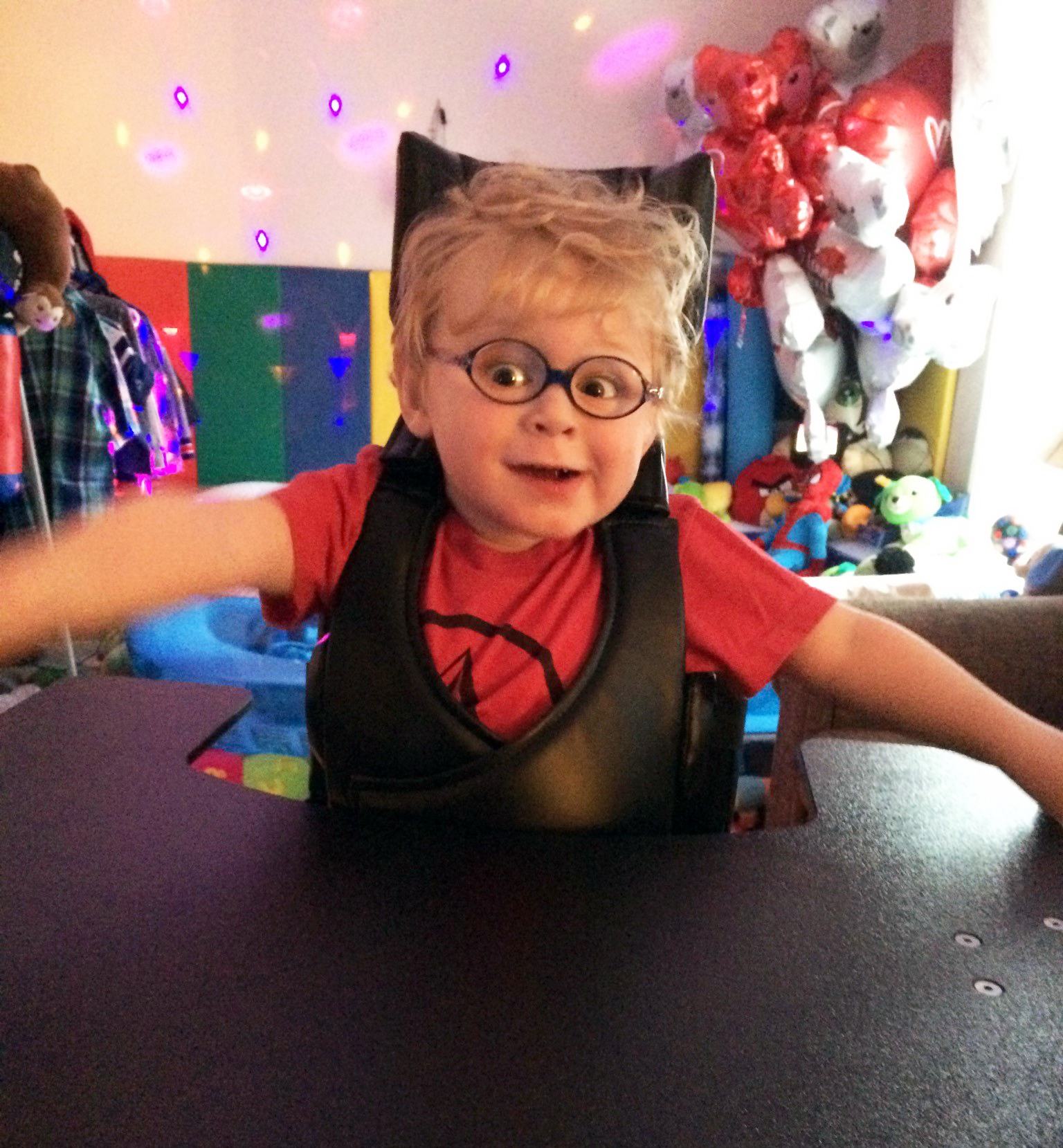Building an accessible house for Atticus and his family

When Terence and Melissa moved in with Terence’s mother, they weren’t planning to stay forever. At the time, Melissa was pregnant with their first son Atticus, and moving in with Terence’s mother was merely a way for them to save some money while they searched for a place of their own. Nearly six years and three children later, they’re still living on the main floor of her split-level house.
Atticus became sick…and that changed everything.
“It was never part of the plan to stay this long, but Atticus became sick and that changed everything,” says Melissa.
Atticus had his first seizure at just four-and-a-half months old. Because he was otherwise healthy and on-track developmentally, the doctors dismissed it as a febrile seizure, which is fairly common among infants and generally doesn’t lead to other health issues.
When Atticus began exhibiting what Melissa describes as “a new type of seizure” at five-and-a-half months, they took him back to the doctor. That’s when he was diagnosed with infantile spasms — a rare epileptic syndrome that occurs in infants and significantly increases their risk for developmental disorders — and refractory epilepsy, which they still struggle with today.
We’ve tried every medicine, every treatment imaginable, but it’s relentless. He has seizures every day — yesterday he had 30. That’s about his average in one day.

Caring for a son with a chronic health condition was costly
When Atticus was just two-years-old, Melissa quit working to care for her son whose health continued to deteriorate. With just one income she and Terence saved everything they could, which they hoped to put toward a down payment for a home. But caring for a son with a chronic health condition proved costly. When Atticus was hospitalized around the same time their second son Toby was born, Terence was forced to take a few months off work so that Melissa could stay in the hospital with Atticus. By the time he was discharged, he had lost his ability to walk, and they needed to use nearly everything they had left to help buy a wheelchair-accessible van.
"Every time we’ve managed to save a significant amount of money, something seems to happen with Atticus and we lose our footing,” Melissa says.
To give people like her and Terence a hand up, Habitat for Humanity removes the barrier of saving a down payment and provides families with the opportunity to pay an affordable, interest-free mortgage based on the fair-market value of the house. In exchange, they are required to volunteer 500 hours of their time on the build site or at a Habitat ReStore, and take classes in home maintenance and finance to support them in becoming Habitat homeowners. Melissa and Terence were told they’d been selected to partner with Habitat Durham last fall, around the same time they learned that Melissa was pregnant with their third child, and they keenly accepted the offer.
An inaccessible and cramped home
“To have Habitat’s support is huge,” says Melissa. The home they share with Terence’s mother is not accessible, which means that at nine-months pregnant with her third child, Melissa was forced to carry five-year-old Atticus up and down the stairs into their home. Lifting him into the tub and leaning over the sliding door’s tracking to bathe him, while two-year-old Toby squeezes into the small bathroom beside her, is another regular challenge.

Along with one small bathroom, they have just two bedrooms between the five of them. Atticus sleeps in the living room, where there’s enough space for all of his medical equipment. It also allows his parents to keep an eye on him throughout the day, since he now requires round-the-clock care. Melissa describes their living room as a “typical” size, but that’s about all that’s typical — there are no coffee or side tables to avoid hard edges and about a quarter of it is taken up by a large, inflatable swimming pool, which acts as a safe and comfortable bed for Atticus. The rest is filled with his medical equipment: a wheelchair, an IV pole equipped with a feeding pump, a suction machine and his “stander,” a large apparatus that allows him to bear weight. The floors are covered with padded mats you’d typically find in a gym.
The couple’s makeshift efforts to create a home that suits Atticus’ needs have gotten them by, but they often worry about accidentally hurting him, and exactly how they’d get him out of the house if there were ever an emergency. Luckily, their new Habitat home will provide more space for his equipment, any stairs will be accompanied by a ramp or special lift, and all of the hallways and doorframes will be made wide enough to accommodate his wheelchair, which Melissa and Terence often struggle with in their current home.
Building a more accessible Habitat home

“Even if we were able to save for a down payment, we’d never be able to make our home as accessible as Habitat Durham has,” Melissa says.
Building a house that’s more suitable for Atticus is top priority, but Melissa believes their new home will benefit their younger son Toby just as much. Not only will both of the boys have rooms of their own — providing more space for Toby to play — but with a larger, more accessible bathroom, he’ll be able to stand right next to his mother while she bathes Atticus, since he likes to squeeze in to help.
“Then there’s just how positive and happy Terence and I will feel,” Melissa says, sounding excited and hopeful about her family’s future. “I think the whole energy will be good for everyone.”
When talking to Melissa it’s not hard to believe that the large majority of Habitat homeowners report being happier after moving into their new home. For her, that change in attitude is already evident — when she switches from discussing her family’s struggles to care for Atticus and save for a home to their present partnership with Habitat Durham, there’s a very noticeable shift in her tone of voice.
“We’ve struggled for years now, and everyone we’ve worked with through Habitat is so encouraging,” she says. While building the house and volunteering at the ReStore, Terence and Melissa have worked alongside friends, neighbours, faculty from Atticus’ school and other local volunteers. According to Melissa, the community support they’ve received as they’ve witnessed a slab of concrete slowly transform into a livable structure has been one of the best elements of partnering with Habitat.
“There’s a real feeling of inclusion, like you’re part of a family, like nothing’s impossible. Everyone at Habitat has hope in us and that gives us hope — and that’s something we haven’t had in awhile.”


